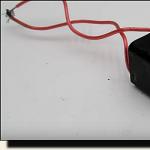Gaining popularity. This happens largely because it is environmentally friendly and has many advantages: it does not break, gives food a unique taste, keeps it warm for a long time, etc. This type utensils are also called cooper's utensils.
Wood for utensils
Many people are interested in what kind of wood wooden utensils are made from. It should be noted that different types are suitable:
- for making glasses, mugs, shot glasses, it is better to use ash, hornbeam, oak and linden;
- for barrels, linden and oak will be relevant;
- Linden and aspen are suitable for spoons, and only the first type of wood for plates.
The most resistant to temperature influences are maple, cedar, bamboo, rowan and linden. However, in addition to the technical and operational properties, it is necessary to take into account the medicinal characteristics of wood. For example, oak has a beneficial effect on teeth, rowan ensures good blood circulation, and alder has calming properties. It should be noted that daily contact with such cooperage utensils will give a positive result.
Product coating and processing
The weak point of wood is its lack of resistance to chemical and temperature influences. For this reason, wooden utensils must be treated and coated with protective materials.
Food grade wooden utensils are processed different ways. The simplest of them is soaking in hot oil (it can be flaxseed or vegetable). Another way is to use a combination of oil and wax.
What do you use to cover wooden utensils? To do this, use a special food varnish, which protects the painted surface from the effects of substances present in food products.
This varnish has a number of properties:
- waterproof;
- durability;
- heat resistance;
- coating strength;
- resistance to infection by fungi and mold;
- protection against cracking;
- quick drying and lack of specific odor;
- resistance to influence detergents and direct sunlight.
Thanks to this coating, the dishes last longer, because the varnish protects them from negative impact external environment.
Painting cooper's ware
The issue of painting wooden utensils is controversial. As a rule, wood itself has beautiful color, so in order to save it natural look, for processing they use transparent coatings, which include the above-mentioned food varnish.

Caring for wooden products
If you have cooperage products in your home, then you should adhere to certain rules for storing and using wooden utensils:
- It cannot be washed in dishwasher, since there is a risk of damaging the surface.
- Due to the sensitivity of wood to moisture, it is advisable to store dishes in dry places to avoid mold. Also be sure to dry and wipe the product after use.
- To eliminate unpleasant odors and for disinfection purposes, you can wipe with an alcohol solution.
- As time passes, cooper's ware darkens. In order to restore it same color, it is recommended to wipe the surface with hydrogen peroxide.
By adhering to these simple rules, you will extend the life of wooden utensils.
| Maslovosk Master has been tested and certified. | |||||||
| Oil with hard wax to protect wood products used in contact with food |
Pigment | ||||||
container 0.1l 600 rub |
container 1.0l 2340 rub. |
container 2.5l 4680 rub. |
|
||||
| buy | buy |
buy |
|||||
| CONSUMPTION: | |||||||
| from 9800rub | example: | certificate | instructions | NO MORE THAN 70 ml/m2 | 2-12% | ||
| Consultation with a TECHNOLOGIST free from 7.00 to 23.45 (assistance in selecting compositions) |
|||||||
| The label of Maslovosk MASTIC uses a REAL PHOTO of a HOUSE that we collected and treated with MASTIC OIL WAX. See house → | |||||||
PURPOSE Master
Oil wax Anta Master
-
hard wax oil, especially hard oil wax with a high content of natural beeswax. Designed as environmental bioprotection, moisture protection and UV protection wooden surfaces and products that may come into contact with food. This modification of oil wax is based on Oil with Hard Wax or Oil Wax Mastic. MASTER oil wax helps protect wooden products, handicrafts and carved decorations made of wood - wooden dishes, barrels and tubs for preparing pickles and pickles, spoons, lining boards and trays, cutting boards for cooking, scoops and ladles made of wood, wooden cups for liquids, handicraft items for various purposes. Oil wax Master can also be used to enhance the protection effect wooden furniture, walls, ceilings and floors in wooden house and baths.
Oil wax Master recommended for use as an oil with hard wax to protect any wood products that may come into contact with food, but which require ABSOLUTE ENVIRONMENTAL FRIENDLY protective composition, complete safety and very RELIABLE AND LONG-TERM protection against mold, cracking and deterioration. Oil wax Master can also be used to update and strengthen protective properties surfaces of their wood (furniture, etc.) that were previously treated with soft waxes such as Maslovosk Standard, Maslovosk Interior, Maslovosk Parquet Terrace, Maslovosk Bath Sauna.
DIFFERENCES Oil wax Master
Oil wax Master is an oil wax with a wide range of applications. Maslovsk Master is produced on the basis of a standard primary modification of oil with hard wax - Maslovsk Mastic and can contain a larger amount of specially selected PURE wood resins, beekeeping products and components to increase the quality and degree of surface protection when used for its intended purpose.
Maslovosk Master is one of the most ENVIRONMENTALLY CLEAN, HARMFUL, reliable and effective products in the line of wood protection impregnations based on beeswax with a base on hard waxes used to protect wood objects and wooden furniture inside the house, improving its aesthetic appearance and extending the service life of products made of wood.
The composition of Master Oilers allows you to maintain the protective properties and process wooden products FOOD CONTACT or used for its preparation or in contact with food.
APPLICATION Oil wax Master
Oil wax Master, Oil with hard waxfor wood products intended:
- for RENEWING the wax coating of surfaces previously treated with soft Oil Waxes - Oil Wax Standard, Oil Wax Interior, Oil Wax Parquet Terrace, Oil Wax Bath Sauna,
- to improve the protective properties of conventional (soft) oil waxes,
- for hard wood,
- wooden crafts self made or carved decorations,
- Handicrafts and carvings made from wood:
- wooden utensils,
- barrels and tubs for preparing pickles and pickles,
- wooden spoons, ladles, ladles,
- lining boards and trays,
- cutting boards for cooking,
- bowls, mugs and cups made of wood,
- wooden cups for liquids,
- handicraft items for various purposes.
- wooden furniture inside the house and bathhouse,
- processing wooden window sills, slopes, ebbs,
- to enhance the protection effect of wooden furniture, walls, ceilings and floors in a wooden house and bathhouse.
- repeated application to regular oil wax to update the properties of the latter,
- improving the quality of a previously processed surface,
- imparting moisture protection properties to wood,
- PREVENTS CRACKING wooden surfaces wood products, leveling the density of the wood over the entire surface, leaving the wood vapor-permeable - “breathable”,
- evenly distributes and regulates the release of excess moisture from wood,
- promoting proper drying of wood, uniform moisture loss and vapor permeation,
- maintaining the original natural color tree because contains natural UV filter,
- giving an antistatic effect to the treated surface.
Oil wax Master It does not cause allergies and is indicated for use to protect wooden products in contact with food or food products. Can be used by people prone to allergies (except for those allergic to pine and fir resin - which is very rare).
From us you can get detailed information on such issues as: Oil wax Master, Oil wax with hard wax, Hard oil wax, Hard wax for wood, Impregnation based on natural oil for wooden objects, mastic for wooden jewelry, mastic for wooden utensils based on natural wax, Wax for wood, how to choose wax to protect wood and how to coat wooden household objects made of wood, how to process carved wooden decorations, how to process them wooden board for cutting food, what is Wax for wood, impregnation for barrels for pickling cucumbers on wax, Waxes for food use, Wax for carved wooden decorations and objects.
Already for a long time wooden products are very popular in all spheres of human activity. Cooking is no exception. All kinds of cutting boards, trays, plates made of hard wood are valued for their environmental friendliness, practicality and, of course, beauty. IN modern world The trend of buying kitchen utensils from natural materials is gaining momentum. If you decide to purchasewooden dishes for home or restaurant, you need to know the basic rules for processing such items.
How to remove odor from a wooden cutting board
It's no secret that wood can absorb the odors of foods, such as onions, fish or spices. A few simple tricks will help you eliminate them:
- Wipe wooden product a slice of lemon or a gauze cloth soaked in lemon juice.
- Sprinkle the dishes with coarse salt, leaving them in this state for a while. The salt will absorb all the unpleasant odors, after which it can be removed with a damp kitchen towel.
- Spray a cutting board or plate with vinegar, then rinse with water and wipe dry.
Antimicrobial treatment of wood boards
In our store you canbuy a solid oak cutting board, wooden salad bowls and trays, plates and breakfast tables that can decorate any kitchen. However, in any case, these dishes will not go unnoticed by pathogenic microorganisms. Although they live on surfaces only until the product is completely dry, carry out preventive actions pest control is still necessary.
The following methods can be used:
- Treat the surface of the product with warm ethyl alcohol or vodka.
- Wiping wooden utensils with clove infusion.
- Rubbing an object with baking soda.
- Treating boards, trays and plates with lemon juice.
After following one or more recommendations, the dishes must be rinsed running water and wipe with a dry towel.
It is also common for wood to darken over time. To prevent this, oak cutting boards and wooden trays should be periodically rinsed with a decoction of onion peels, adding lemon juice to it. To get rid of berry stains, simply wipe a bowl or salad bowl with hydrogen peroxide. It will also help return the product to its original color.
Do you want to use environmentally friendly wooden utensils in the kitchen that do not emit harmful substances, but are you worried about the difficulty of caring for her? Don't worry! It is enough to follow a few simple rules, and your purchase will delight you with its beauty for a long time.
Often, when making dishes, the question arises of what to use as a coating in order to preserve the surface in the condition before use, and after that it is easy to wash off food residues without damaging the surface of the dishes. So universal remedy became food varnish. It has found wide application in the food and light industries.
What it is
Varnishes, or as they are also called, varnish dyes, are water-insoluble complex compounds of water-soluble synthetic dyes with aluminum ions. Water insolubility allows them to be used for coloring confectionery products and chewing gum, avoiding unwanted staining of the mouth.
Food varnishes are not subject to chemical influences and withstand direct sunlight, unlike related dyes. They give the painted product a clean, bright matte color. In its production, equipment with a large number revolutions during rotation when the particles of the product dissolve. These varnishes are approved for use in the food and light industries in the territory of Russian Federation and the European Union.
Production
The production of food colorings and varnishes is a complex technological process. Depending on the materials used - organic and inorganic - the technology is different. It is mainly based on mixing synthetic dyes consisting of water-soluble components with the addition of aluminum ions.
Initially, a dispersing mixture is prepared, then the semi-finished products are ground with pigments (synthetic or natural organic oils) to obtain the base color and its shades. Subsequently, the pigment paste is mixed with water-dispersed components, then distributed according to shade and properties, and poured into containers for sale to the consumer.
Varieties

The main property of food varnishes is durability; after application to the coating, they can maintain their integrity for up to 15 years. The varnishes are completely waterproof and resistant to mechanical and chemical damage. They easily withstand electrical and electrostatic influences without causing harm to the health of the consumer, since they are completely chemically inert. They are resistant to sea water, acids and alkalis, as well as aggressive gases. They are not susceptible to fungi, moss and insects, and have a wide range of operating temperatures from -30 to +60 °C.
Also, food varnishes are not subject to destruction by fire, as they have the property of self-extinguishing. After application, they dry quickly and have no residual odor, even after painting. vertical surfaces; do not have drips, which gives the products aesthetic appearance.
Application technology

Before application, the surface must be dry and clean. various elements, which can interfere with uniform coverage and quick drying of the varnish. Food coloring varnish is applied to the surface using a brush, rollers, or it is also possible to use special equipment(spray guns, air pressure sprayers). Temperature range when used is from -10 to +30 °C. Be sure to mix thoroughly before use.

Experts who constantly work with food varnishes advise, before use, to initially study the properties of the coating and its interaction with the environment that will be stored in the container or room. When applying, do not flood the surface, but distribute it evenly. To paint wooden containers or utensils, it is sometimes recommended to pre-coat them with a primer; before priming the wood, the wet sanding method is used. The workpiece is soaked in water, then the surface is rubbed with fine-grained abrasive paper until it is perfectly smooth.
To dissolve the varnish and to clean the instrument, it is recommended to use special solvents such as acetone, methyl ethyl ketone, butyl acetate, ethyl acetate, amyl acetate. The use of solvents such as white spirit, turpentine, gasoline, kerosene, R-646 and R-647 is strictly prohibited.
Features of application

Food grade varnishes have a wide range of applications both in the food industry and in the painting of construction sites, where the use of this particular type of varnish is required. A frequently used application is chemical protection. Varnishes provide protection against aggressive gases such as carbon dioxide, nitrogen oxide and sulfur. A solution of salts, alkalis and acids (hydrochloric, sulfuric and nitric) do not affect the surface on which food varnish is applied. Food coloring has a protective effect against any chemicals contained in food that will be stored in varnished containers.
The number of layers depends on the aggressiveness of the environment, as well as on individual requirements customer and according technical documentation when using the coating. Varnishes are also used for application to metal, concrete and wood coverings, for transportation and storage of liquid and bulk products, for example alcohol, water, wine, juices, milk, flour. Food grade varnish for wood is the most perfect view coating, because it has no odor, dries quickly and does not leave streaks. For these properties, it is widely used in woodworking.
Sometimes sewer and waste pipes are coated with varnish for food surfaces, internal surfaces oil pipelines, water treatment and ventilation systems, as well as heat and water supply. Offshore platforms, chemical shops, as well as electroplating baths are coated with these varnishes.
Varnishes are also widely used in the confectionery industry and pharmaceuticals. Varnishes for food and dishes are used; they are used to paint wooden spoons and wooden barrels, buckets, which increases their service life.
There are many on the Internet most interesting articles for processing with various mastics, pastes, etc., giving it interesting smells, colors and properties.
In this article we will look at the simplest of them.
Next season we planned to start abandoning turned utensils, replacing them with hand-cut ceramic and wooden ones. But the events of the warrior's field with an overturned table and broken ceramic bowls and mugs forced me to delay making such a decision.

Well, let's get back to our impregnations.
One of the simplest impregnations that protect wooden utensils from cracking is boiling them in hot oil for 5 minutes. It’s not much better to take refined oil to rid the dishes of the unnecessary cloying smell of oil. And if this smell is nothing terrible for a bowl and spoon, then such smells are usually not desirable for a mug. This is the meaning. Take 2 liters of refined vegetable oil, pour it into a large saucepan, heat it up, put a small container in the warm one, bring it to a boil and cook for 5 minutes. In this case, the dishes must be turned over so that the oil saturates it on all sides. The dishes become pleasant golden hue, appetizing smell, not afraid of hot use, i.e. It will not crack from hot soup or tea, and it also acquires relative water-repellent ability. But in order to prevent excess oil from getting into food, it is necessary to first rid the dishes of these excesses. To do this, wrap it in toilet paper and place it on the radiator. This will absorb excess oil into the paper. Then you need to repeat this process of getting rid of unnecessary residues 3-4 times, replacing the paper.
In general, everything is quite simple. But I wasn't entirely satisfied this method. My bowl was still leaking a little around the core and it really annoyed me.

I took a new bowl. And I decided to experiment with other types of impregnations.
What I liked most was the combined method of wax and oil.
Melt beeswax and add a little vegetable oil(a couple of tablespoons), and with a new clean brush we begin to apply it to the outer surface of the bowl, as well as to its bottom. In order for the wax to be better absorbed, you can preheat the surface with a hairdryer. We do this until the wax begins to appear on the back side. After this, leave the bowl to dry and put refined vegetable oil on the stove to heat up. After it has warmed up, turn the bowl over and begin to coat the inside of the bowl with a brush until the oil is no longer actively absorbed. It is better to do all these operations on a bed of napkins. And it’s better to cover everything around with newspapers to protect against accidental splashes.
But here we now have wax smudges on the outside and excess oil on the inside. We remove them as follows. Stuffed into a bowl toilet paper, start warming it up with a hairdryer outside, removing excess wax with an unnecessary rag. When heated, excess oil will be released from inside and absorb into the paper.
That's how it is))))))
Then we expose the dishes to the air, with a new portion of paper inside. Let it dry. The excess will be absorbed into the paper.
In general, it is better to always store dishes in an open state. Do not put it in bags or cabinets, otherwise it may become moldy.
After the festival, having thoroughly washed and dried the dishes, place them on open place. will serve great decoration your interior, and she herself will feel great.
It is also better to store ceramic dishes in open form, otherwise you can get bad smell or mold in it.




